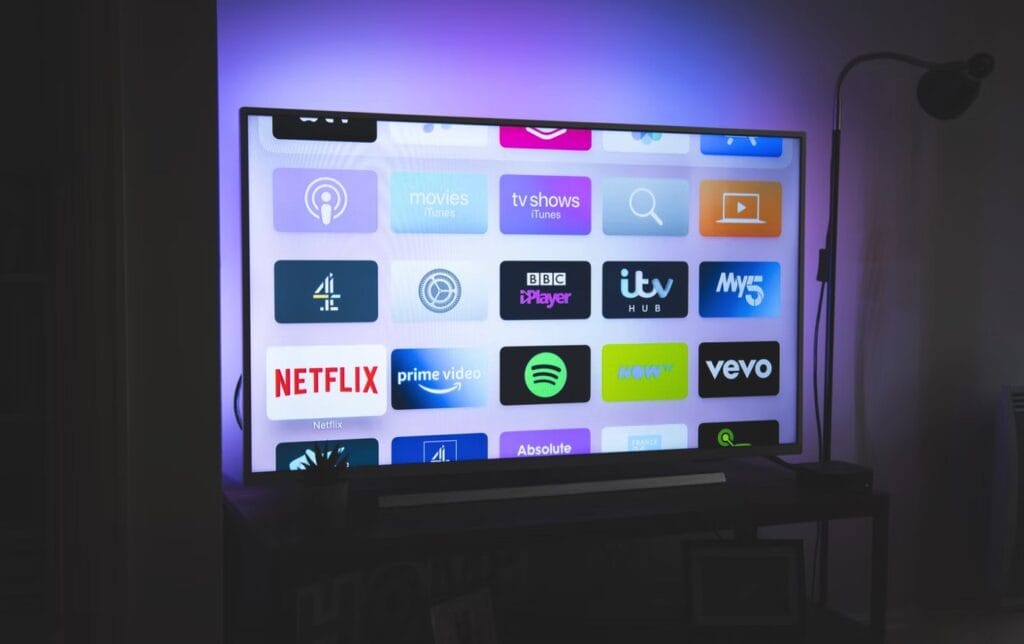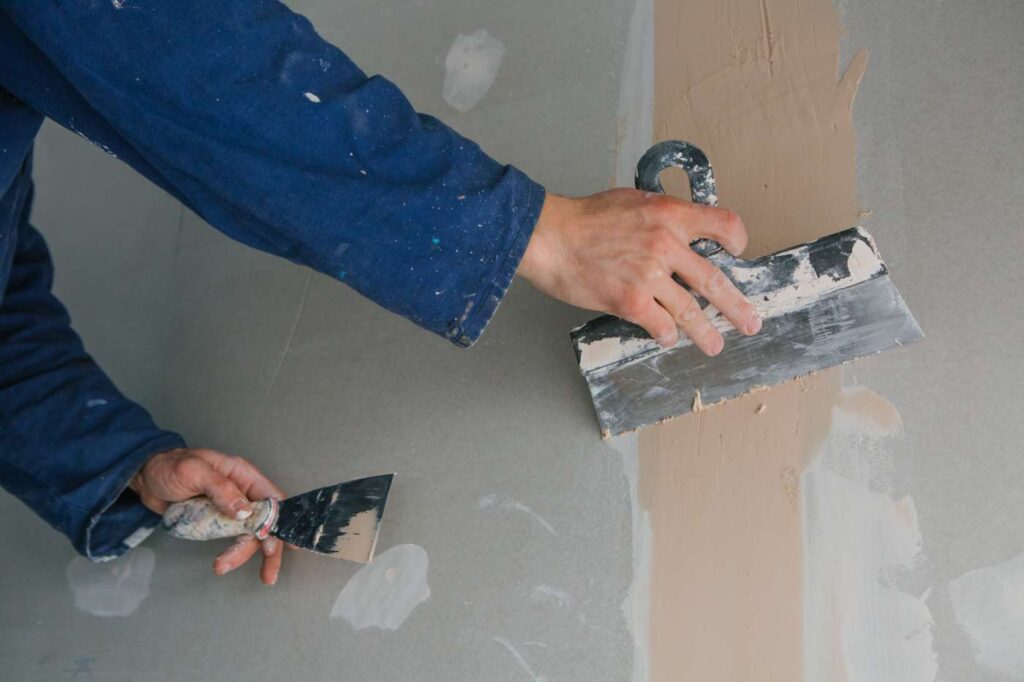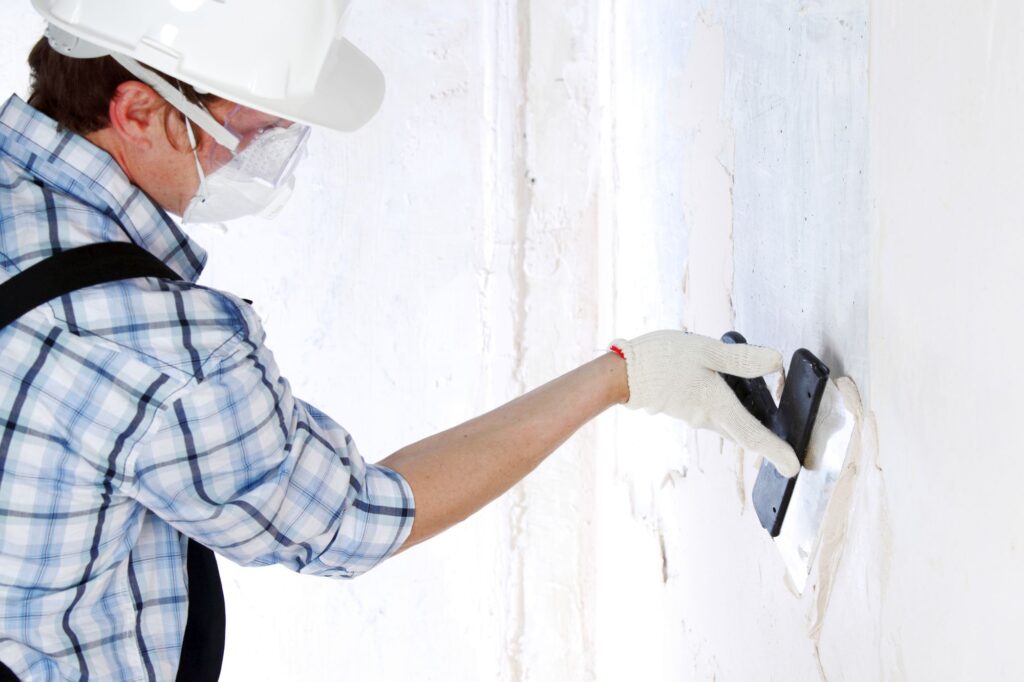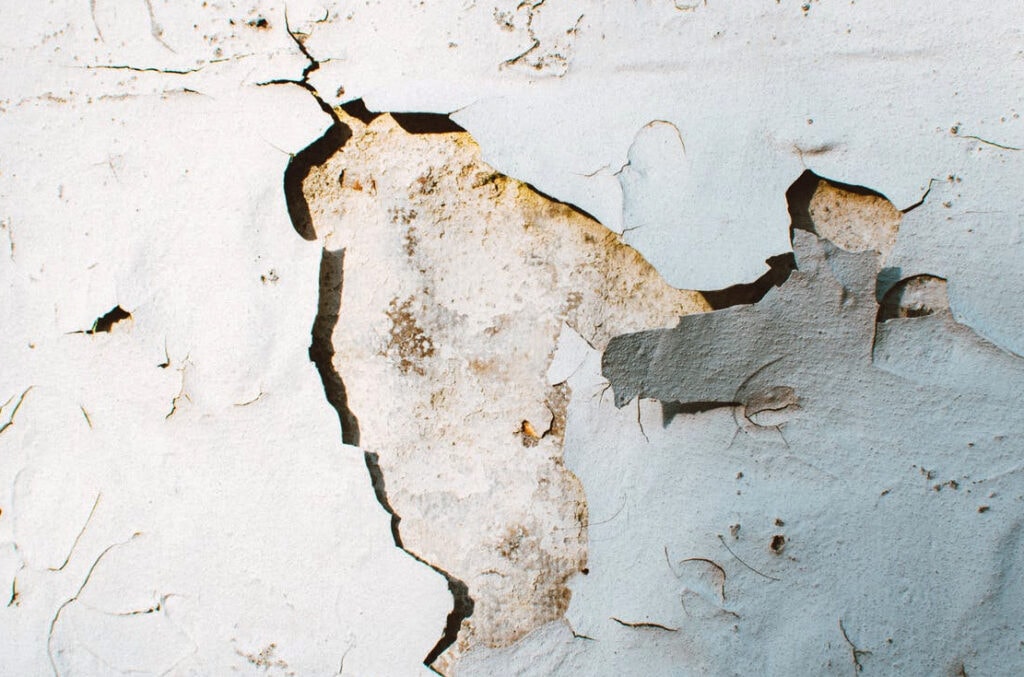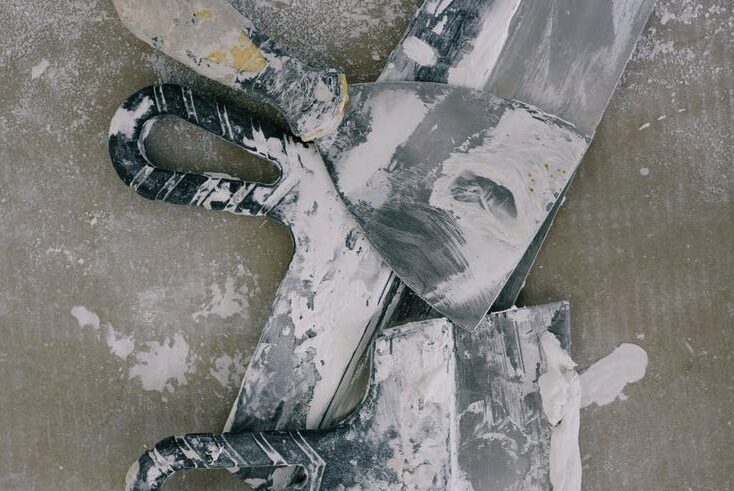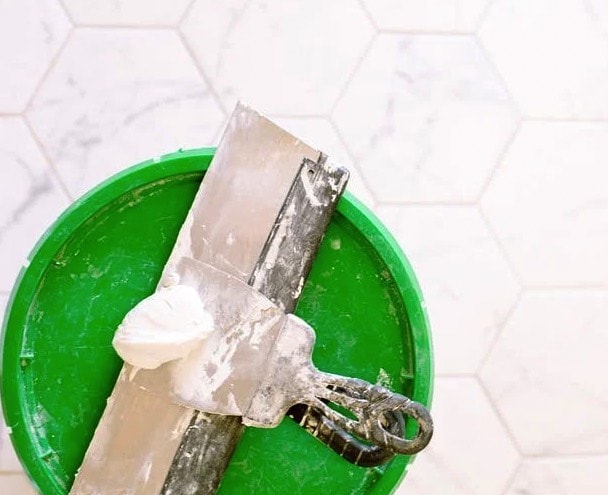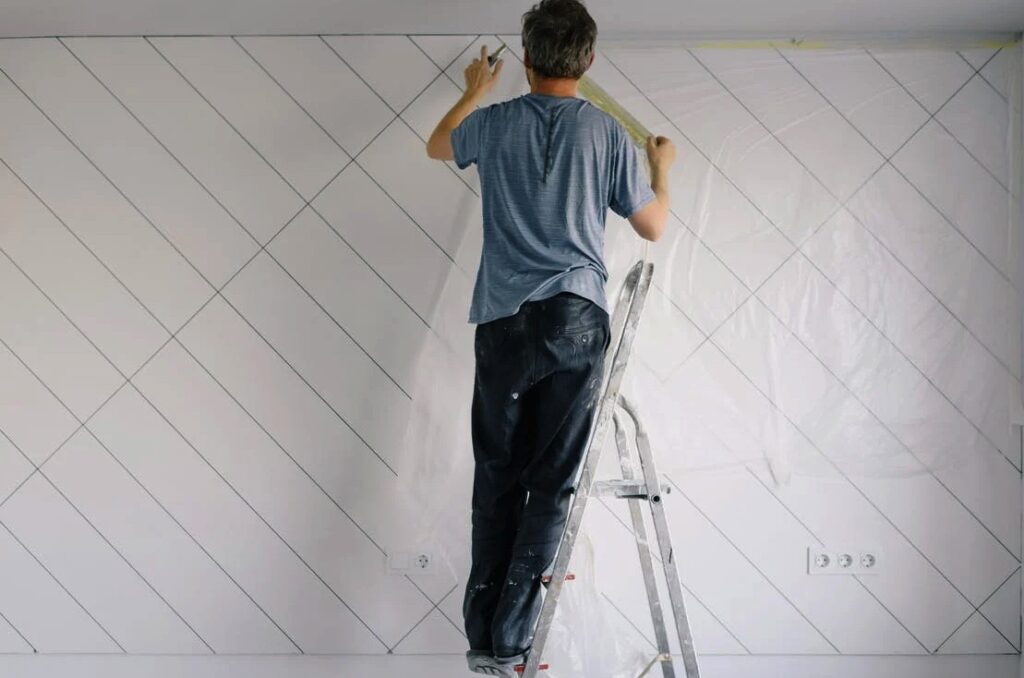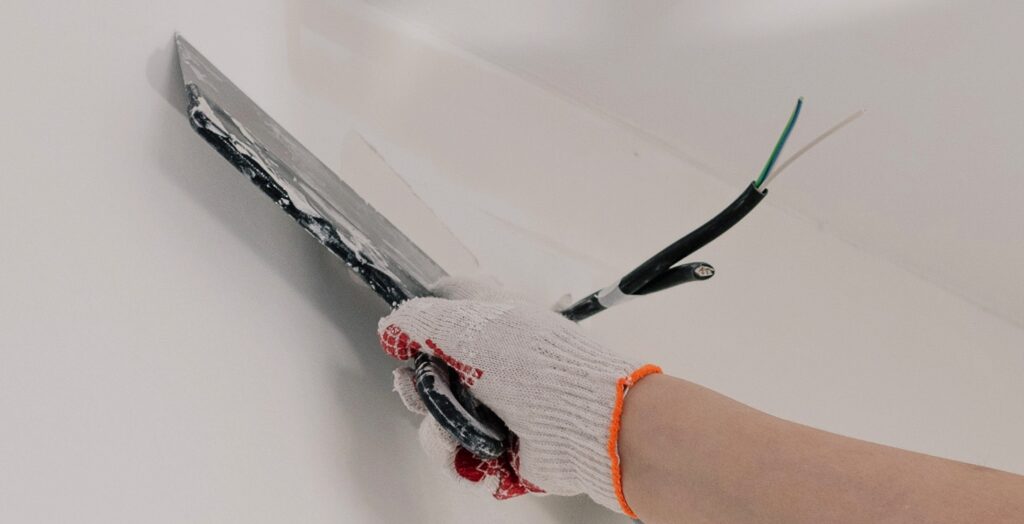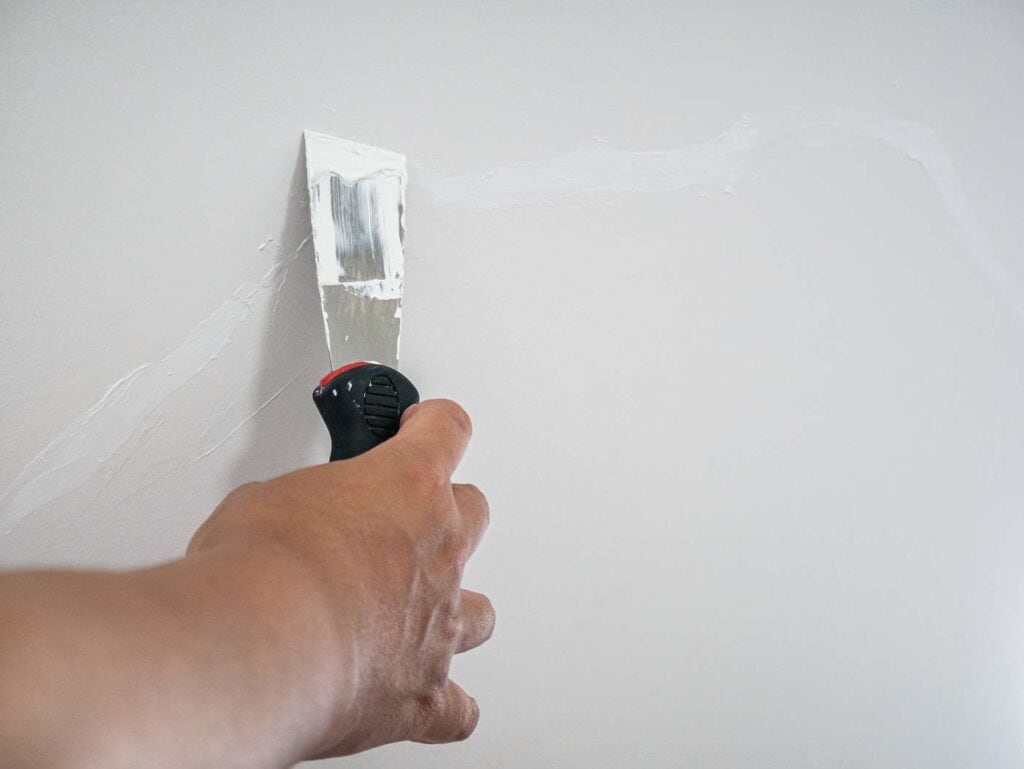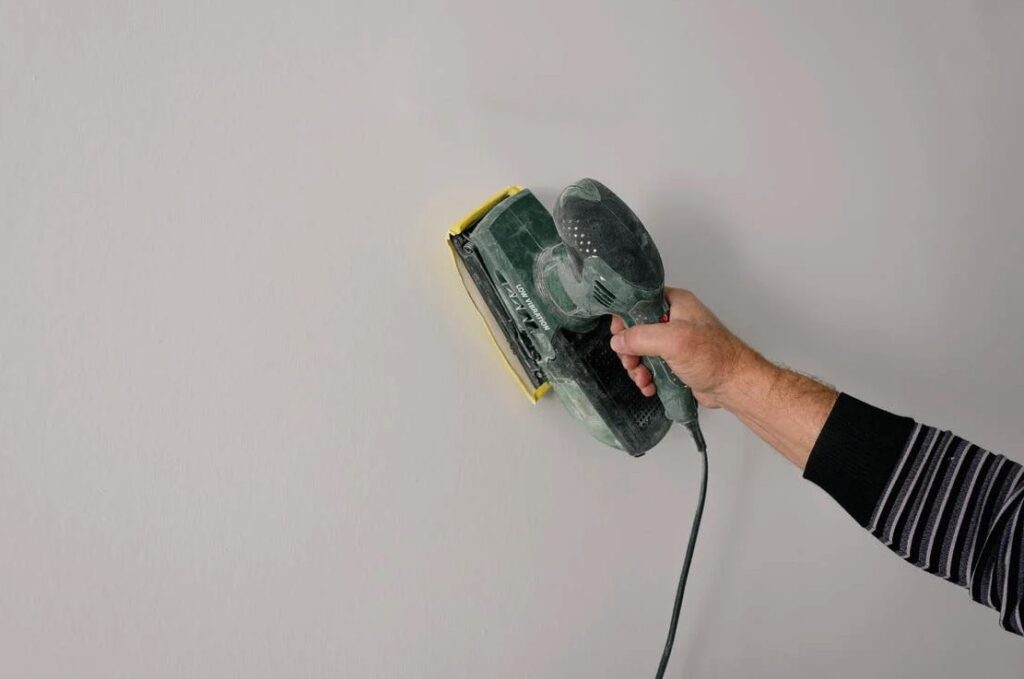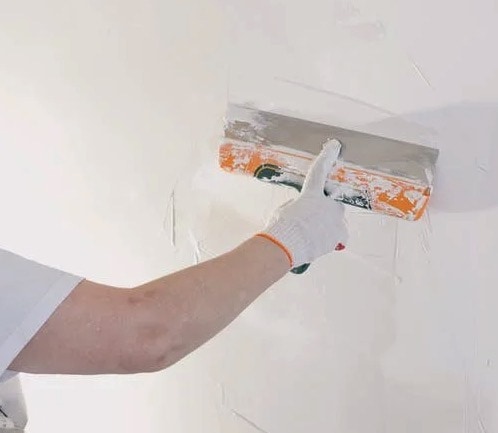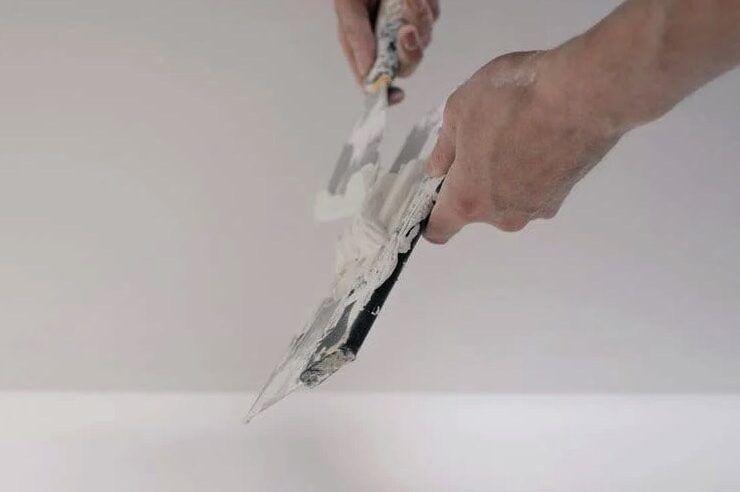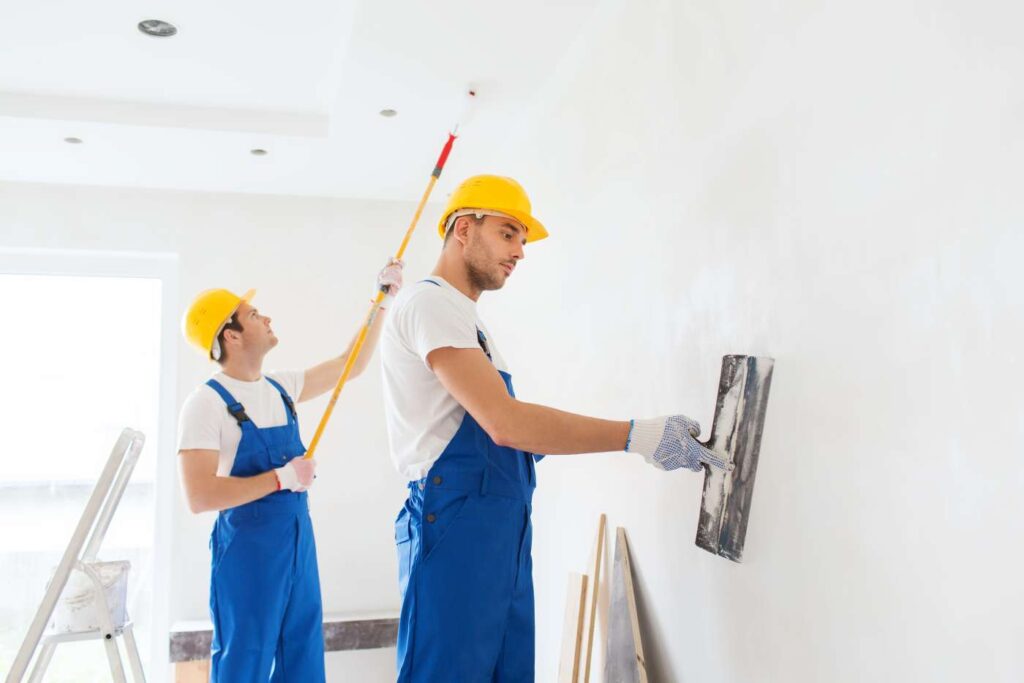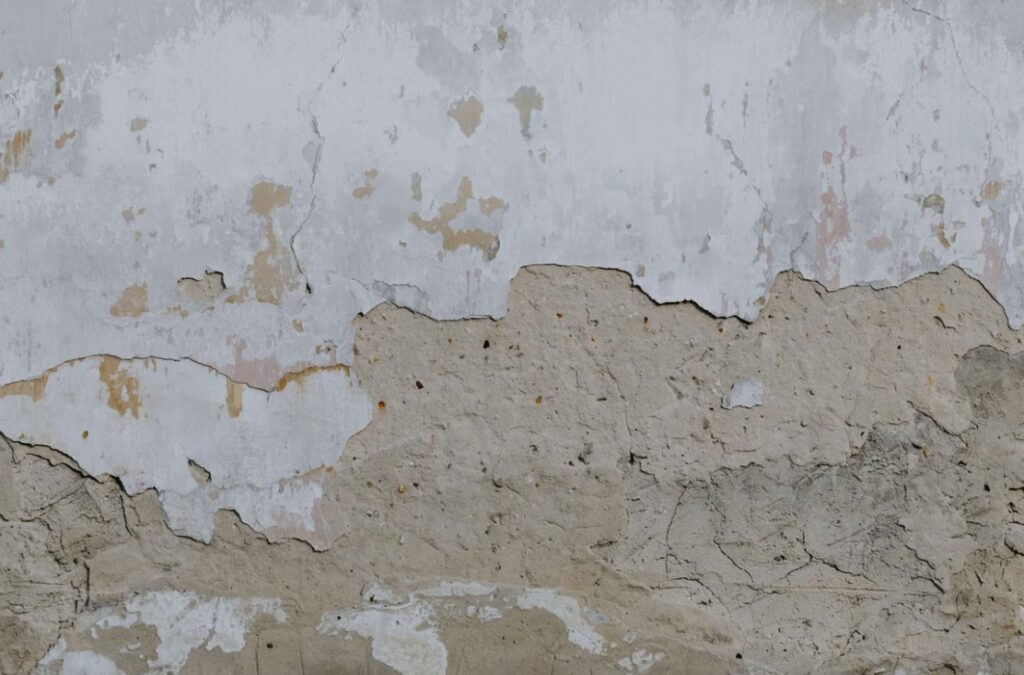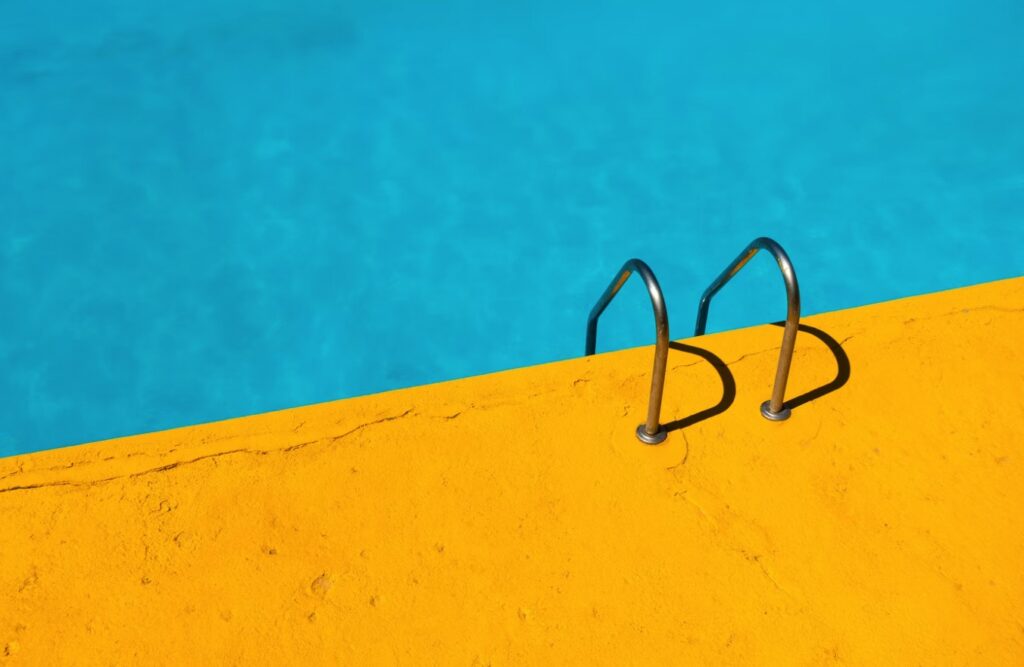Similarly to how mounting methods have changed as televisions have shrunk in size, so too have installation methods. Putting a new TV on a table was formerly all that was required for setup.
The popularity of televisions has risen despite the fact that they have shrunk in size due to advancements in picture quality and the ability to be mounted on the wall.
Mounting a television on the wall can improve the look of a room by concealing unsightly connections and wires and reduce the need for large entertainment centres.
For good reason, TV wall installation has become increasingly common in recent years.
The cumbersome entertainment centre is no longer required for you to watch television.
Additionally, there is no longer any need to worry about stumbling over cords on the floor.
TV mounts for drywall are widely used due to their ease of installation, although they still necessitate the presence of wall studs. Studs are the vertical pieces of wood that form the framework of your walls.
Drywall is fragile, so mounting your TV to it directly risks putting it through the wall and into the floor.
You can prevent the TV and its mount from moving around by securely attaching them to the wall studs.
However, a new challenge appeared alongside this innovative strategy. There are TV mounts available that can be affixed to studs. Wall studs are the vertical wooden elements that serve as the structure of your wall.
Conversely, studs aren't required in every wall. The same cannot be said for plaster and other similar building materials. Maybe you're curious about whether or not you can mount a TV on the wall without utilising studs in the plaster.
Here you'll find information on how to install a TV on stud and dry-lined plasterboard walls. In our next instalment, we'll show you how to mount a TV on the wall without having to drill into the studs.
How to Studlessly Mount a TV on a Plaster Wall
Where do you plan to hang your brand new television once you've taken it out of the box?
Before you can start enjoying your shows and movies, you need to choose the finest area to mount your TV.
Worse yet, what if there are no studs on which to instal the TV? So, how do you proceed now?
Some consumers feel more secure mounting their TVs on drywall as opposed to stud walls.
TV mounting on a drywall wall is difficult and sometimes even dangerous because of this misconception.
It may be difficult to attach a TV without using studs.
A TV may need extra support from the mount to ensure it doesn't tumble to the floor during installation, despite drywall's ability to handle weights of up to 100 pounds.
The studs in your wall are what you'll use to secure your TV's frame. They serve as a solid anchor, preventing the TV and its mount from shifting.
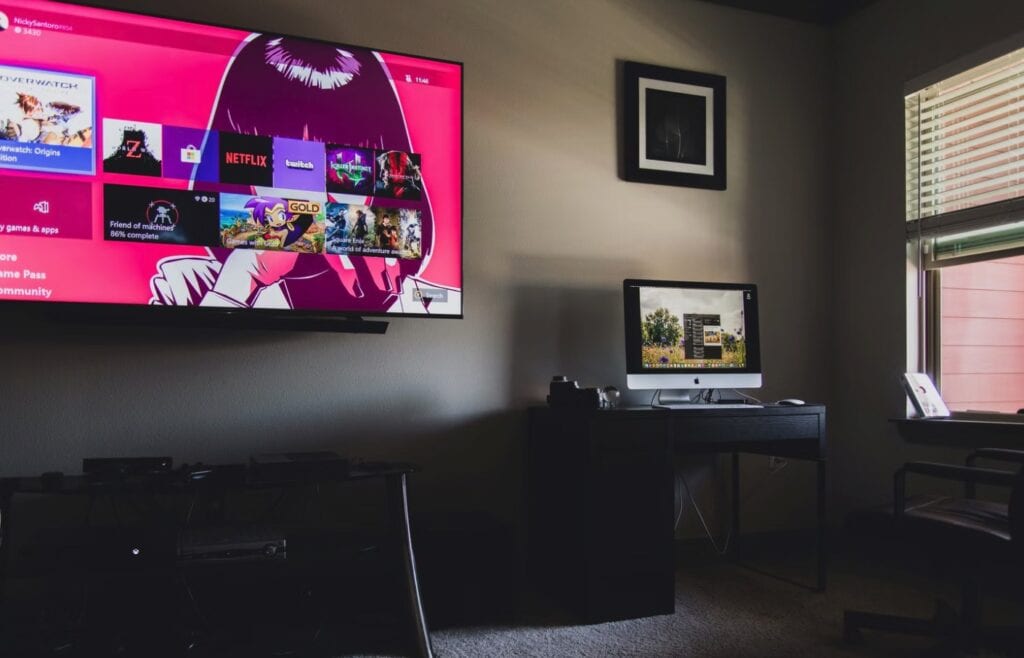
But what if your walls don't have studs? A TV can be installed on a plaster wall even if there are no studs present. How exactly does it work?
If you:
- Have used a stud detector and discovered nothing;
- Cannot put your TV on the wall because metal studs run down the back of it;
- We are working on an older home with plaster walls and no studs;
In the absence of studs, the best method for mounting a television on a plaster wall is to use anchors. They are easy to use and do an excellent job of keeping screws in place. However, let's discuss mounting it first.
Toggles
- Butterfly anchors, or toggle bolts, are screws with wing-shaped points. The bird can use its wings as a scaffolding as it flies into a hole. This makes it nearly impossible to get them out of the system. However, before you start drilling, you'll need to attach the object to the bolt head. You can't take them out once you've drilled them in. Toggle bolts are well suited for use with wall hooks, but are impractical when mounting more than one television.
- Plastic straps with a metal ring at one end and a locking mechanism at the other are known as either strap toggles or zip toggles, depending on the brand. Toggle straps are easy to install because they don't require any drilling.
Plasterboard A stable foundation is essential for TV mounting setups. Find the sturdiest one that can hold your TV's weight and use it.
Therefore, it is imperative that you invest in a sturdy bracket.
However, it's crucial to keep in mind that not each plasterboard is the same. In the standard set of alternatives, two items are always present.
- Plasterboards fastened to the studs using screws
- Plasterboard with adhesive backs attached to brick walls
Televisions can be installed in a number of methods, some of which are more permanent than others.
There is a finite number of aesthetic options for walls made of plasterboard and padded with hardwood.
First, you should aim for the studs and pitch them in as straight as possible.
Finding them and making sure they are in the right place for the TV is the hard part.
It's easy; just find the screws and studs into them. It's inconvenient to have to rummage around and second-guess yourself as to whether or not you placed the TV's cables in the optimal spot. Since you might want to move the TV in the future, mounting it to a stud is not a good option.
The necessary TV mounting hardware
Don't forget to factor in the cost of the specialised tools needed to mount a TV to a studless wall.
The following are examples of necessary equipment:
- Hammer
- Flip the anchors
- Screw anchors into the ground.
- Anchoring screws for drywall
- Similar to a butterfly switch
- During a game, Molly runs
- Anchor for a hollow wall Anchor for plaster Anchor for a wall
How To Use Toggles To Mount A Tv On A Plaster Wall In Place Of Studs
- Mount your TV to the wall. Use this as a reference when you make your markings.
- Make sure the mount is completely level by using a level.
- Write or draw random dots on the wall.
- The TV wall mount is not to be used in any way.
- Fold the toggle in half, and use that measurement to guide the drill bit.
- Drilling is required for the holes.
- When the strap is folded, the toggle can be put into the hole.
- To remove the tab, simply pull it out.
- Position the little plate so that it is flush with the wall.
- Concentrate on contracting your abs while you press down on the plate. If you do this, it will stop spinning.
- Just fold the legs down to pop them off. There has to be a snapping sound.
- Simply screw the included toggle straps into the wall and hang the TV such that the holes align to utilise the mount.
- Build the anchors into the wall to make sure the mount stays put. There may be a preemptive need for washers.
- Set up the wall mounts for the television.
- With the help of a friend, you can lift the TV and set it atop the mount.
Each toggle bolt must be pre-installed on the TV mount.
Putting An Anchor In The Wall
TV mounting plates often require drywall anchors to ensure a secure attachment to the wall.
Anchors for walls are devices that fit into the sleeve of the drilled hole and secure the screw.
Figure out where you want to put holes and where you want to attach the mounting plates.
Then, use a level to find a stable foundation.
The sleeve can be easily installed by sliding it into a hole that has been bored to the same diameter as the anchor. Use a one-time pull tool to tighten the anchor for further safety.
You can then secure the mounting by screwing it into position.
mount the TV to the wall by inserting the bracket into the anchor holes.
For the record, I am not a fan of Molly Bolts
Using Molly bolts, televisions can be installed on drywall in the absence of wall studs.
They're threaded, and there's a screw on the inside.
It's possible to get these fasteners in both pointed and flat varieties.
- Pointed ones can be utilised directly without the need to drill a hole. Tapping them into place with a hammer ought to do the trick.
- The non-pointed ones need a hole to be drilled in the wall because they do not have a pointed tip. Since driving nails or screws into a plaster wall might cause cracks, these alternatives are suggested.
How to Install Molly Bolts
- Your TV would benefit greatly from being mounted on the wall.
- Mark the wall where the holes will go.
- Create the holes using a drill bit of the same diameter as the molly bolts you intend to use.
- Molly bolts must be installed into the correct holes. The "teeth" at the top of a bolt prevent it from turning in its socket.
- The screw needs to be tightened with more effort. As the sleeve behind the wall expands, you'll hear a soft clicking sound.
- After the screw has been fully tightened, it needs to be loosened. Half of it detaches itself from the wall, while the other half stays securely fastened.
- Do the same with the remaining symbols by just repeating the procedures above.
- To properly secure the TV mount, all of the holes must be perfectly aligned.
- Attach the TV to the wall using the mounting brackets on the back.
- Get a helping hand hoisting the TV so you can mount it on the wall.
The addition of a mounting plate should be considered
An alternative that can be used is anchors and a mounting plate.
Mounting plates are often made of metal, however plywood can also be used. This can reduce the strain on your anchors, allowing you to use more of them for better TV stability.
Mounting plates that end up being bigger than the TV are less appealing to the eye.
To get the best visual result, you may want to find a mounting plate that is both smaller than your TV and more in line with the style of the room.
Mounting Hardware for TV on Drywall
As a result, the market currently offers a plethora of plasterboard fastenings in a wide variety of designs. If your TV is particularly heavy or is mounted on a folding arm that is situated between the studs, you may also want to cut out a segment of the plasterboard walls and insert a piece of plywood.
You may now relax and put the screws to something in safety and comfort.
If, however, your walls are finished with dry plasterboard, then you should pick the wall's sturdiest spot before installing your TV.
But for safety, you'll need coach bolts or screws that are far longer. Then, carefully instal it in the brickwork behind the TV, making sure there isn't a huge space between the bricks and the drywall.
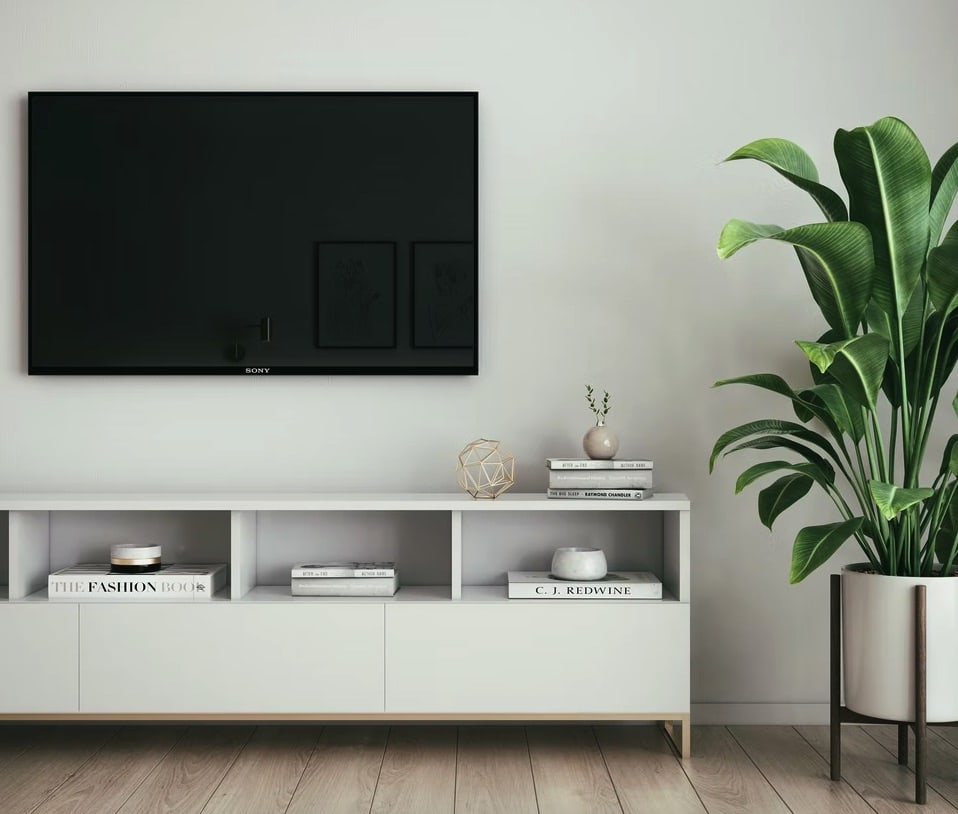
Set Your TV on the Ceiling
Not ideal, but doable in a hurry, is to suspend the TV from the ceiling if no studs are available.
Although joists or beams can serve in place of studs, their assembly might be more labour-intensive and time-consuming than anticipated.
You may need longer screws to reach the joists, which may be farther apart than you think, depending on the height of your ceiling and the weight of your television.
Mounting a Television on a Stud-Free Wall: Some Things to Keep in Mind
A television can be mounted on a studless wall, but there are several things you should always bear in mind. Find out if there are any studs in the wall by using a stud finder.
Furthermore, you can check if the studs are covered, which would explain why the gadget couldn't find them.
The Current Condition of the Wall
Anchors only work in freshly plastered, completely smooth walls.
Old, crumbling walls are not safe to drill through because they can give way beneath the weight of the tool.
The wall might hold up to the drill, but it might break if you try to hang the TV on it. After the new television has been installed, even a minor bending could lead to future issues.
Weight of Televisions
Look at the packaging to see how much your TV weighs.
Now that you know what kind of anchors you need, you can go out and get them. All the hardware is included in that definition.
TV Wall Bracket Classification
When searching for an appropriate wall mount, it is also helpful to know the exact dimensions and weight of your television. Mounts can be tilted or left in a stationary position.
If the screws that came with your model were too small to hold in your wall studs, you may want to consider upgrading to a new model.
Remember that if you opt to get a tilting wall mount, you shouldn't use it all the way to its extremes. More pressure will be applied to your wall and its anchors. Actually, if your wall doesn't have studs, a permanent TV mount is your best bet.
Evaluation of the Mount's Excellence
Generalising, nearly all TV wall mounts work with any brand or size of TV. However, the size and weight that can be accommodated are limited. Consider this when shopping for a TV mount.
Check with the Professionals
If you're having trouble settling on a mount or anchoring, why not just give an expert a call? Fantastic Services has experts that are well-equipped to mount TVs on drywall. There's no need for practice runs, and the professionals have everything they need on hand. Simply provide us with your television's dimensions, and we'll take care of the rest.
Conclusion
The practice of mounting televisions on walls has gained popularity in recent years. Wall-mounting a television can enhance a room's aesthetic and eliminate the need for bulky entertainment centres.
The studs in your wall are the wooden pieces that hold everything together; however, studs are only necessary on some walls.
Although stud walls are the more traditional option, some customers feel better at ease putting their TVs on drywall.
However, mounting a television on a drywall wall is a challenging and perhaps risky task.
If there are no studs in the wall, you can still mount a TV on the plaster using anchors or toggle bolts.
Again, there is to be no interaction with the TV wall mount.
To mount your TV on the wall, screw the provided toggle straps into the studs and line up the holes. Anchors for walls are devices that secure screws by sliding into the sleeve of the drilled hole.
Again, a stockpile of washers could be useful in advance.
There is no need for wall studs when mounting a television on drywall with the help of Molly bolts. Metal is the most common material for mounting plates, but plywood is also a viable option.
As a result, you can use more anchors for improved TV steadiness. Things to Consider When Mounting a TV on a Stud-Free Wall Use a stud finder to determine any studs in the wall.
Using joists or beams in place of studs is possible but doing so may require more work. However, specialists from Fantastic Services have the necessary equipment to mount TVs on drywall successfully.
Just tell us how big your TV is, and we'll take care of the rest. A permanent TV mount is your best bet if no studs are in the wall.
Content Summary
- The popularity of televisions has risen even though they have shrunk in size due to advancements in picture quality and the ability to be mounted on the wall.
- TV mounts for drywall are widely used due to their ease of installation, although they still necessitate the presence of wall studs.
- Drywall is fragile, so mounting your TV directly risks putting it through the wall and into the floor.
- You can prevent the TV and its mount from moving by securely attaching them to the wall studs.
- There are TV mounts available that can be affixed to studs.
- You may be curious whether you can mount a TV on the wall without utilising studs in the plaster.
- Here you'll find information on how to install a TV on stud and dry-lined plasterboard walls.
- In our next instalment, we'll show you how to mount a TV on the wall without drilling into the studs.
- Some consumers feel more secure mounting their TVs on a drywall than stud walls.
- This misconception makes TV mounting on a drywall wall difficult and sometimes even dangerous.
- The studs in your wall are what you'll use to secure your TV's frame.
- A TV can be installed on a plaster wall even if no studs exist.
- If you: Cannot put your TV on the wall because metal studs run down the back of it; We are working on an older home with plaster walls and no studs; In the absence of studs, the best method for mounting a television on a plaster wall is to use anchors.
- Screw the included toggle straps into the wall and hang the TV, so the holes align to utilise the mount.
- Build the anchors into the wall to make sure the mount stays put.
- You can then secure the mounting by screwing it into position. Mount the TV to the wall by inserting the bracket into the anchor holes.
- Molly bolts must be installed into the correct holes.
- To properly secure the TV mount, all holes must be perfectly aligned.
- Attach the TV to the wall using the mounting brackets on the back.
- Get a helping hand hoisting the TV so you can mount it on the wall.
- Mounting plates are often made of metal. However, plywood can also be used.
- To get the best visual result, you should find a mounting plate that is smaller than your TV and more in line with the style of the room.
- If your TV is particularly heavy or is mounted on a folding arm between the studs, you may also want to cut out a segment of the plasterboard walls and insert a piece of plywood.
- If your walls are finished with dry plasterboard, you should pick the wall's sturdiest spot before installing your TV. But for safety, you'll need coach bolts or screws that are far longer.
- Not ideal, but doable in a hurry is to suspend the TV from the ceiling if no studs are available.
- You may need longer screws to reach the joists, which may be farther apart than you think, depending on the height of your ceiling and the weight of your television.
- Find out if there are any studs in the wall by using a stud finder.
- The wall might hold up to the drill, but it might break if you try to hang the TV on it.
- After the new television has been installed, even a minor bending could lead to future issues.
- Now that you know what kind of anchors you need, you can get them.
- When searching for an appropriate wall mount, it is also helpful to know your television's exact dimensions and weight.
- More pressure will be applied to your wall and its anchors.
- A permanent TV mount is your best bet if your wall doesn't have studs.
- Fantastic Services has experts that are well-equipped to mount TVs on drywall.
Frequently Asked Questions About TV Plasterer
Insert a screwdriver into the rotary insert. And turn 90 degrees to the right. This will allow the wings to insert a screwdriver into the rotary insert. And turn 90 degrees to the right. This will allow the wings to open at the back of the Gripper. And secure it into the wall.
Because standard stud finders detect a change in density inside the wall, they don't work on lath and plaster – the density inside these walls is not constant enough. So if you have just moved into an older home and your stud finder isn't doing its job, invest in a metal scanner instead.
Drywall anchors can be used on plaster walls like they'd be used on drywall. However, they're not necessary in many cases because it's easier to get a screw into the lath.
Take a pushpin and press it on the wall using your thumb. If the pin pokes into the wall easily, that's drywall. If it doesn't, then that's plaster. A pushpin can penetrate drywalls easily because they're softer compared to plaster.
Hanging items on plaster almost always involves drilling a hole first since nails may not penetrate the thick surface, and they tend to leave cracks if they do make it through the plaster. Drilling a hole in plaster safely prevents cracking around the hole area while minimizing the amount of plaster dust kicked up.
